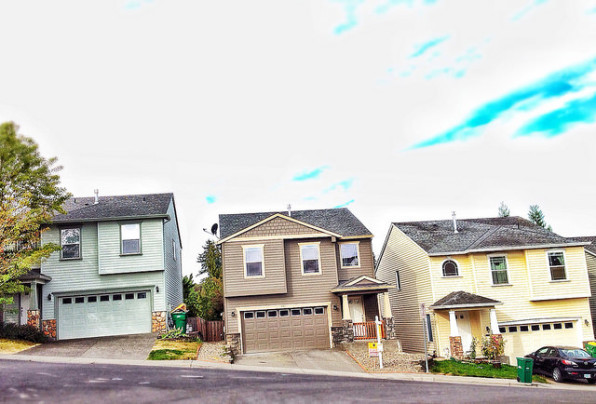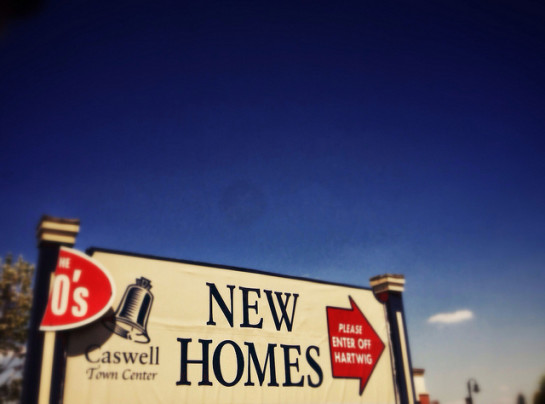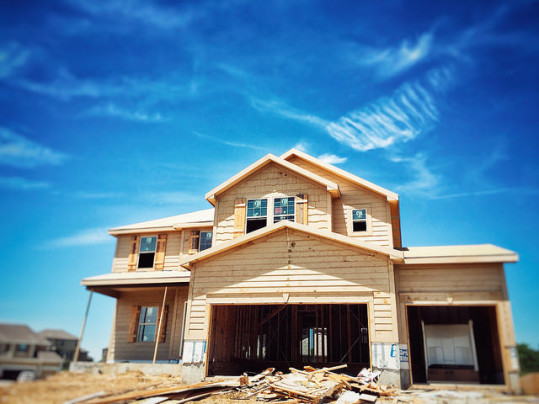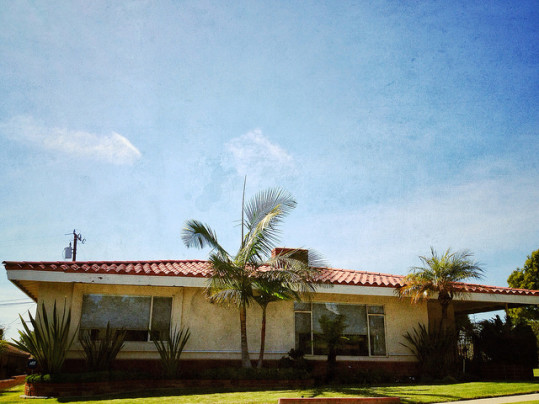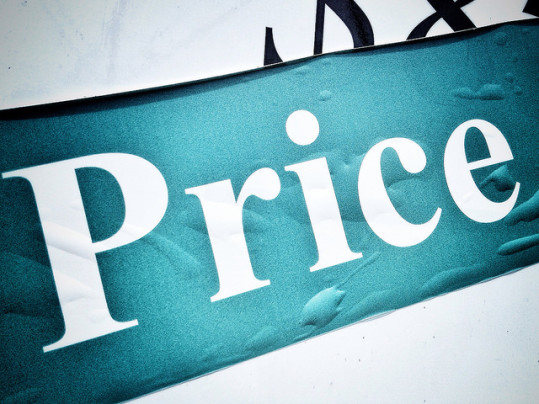Historically, buyers at the higher end of the housing market rebound more quickly from a recession than the average home buyer – who may have to watch their money more closely during rough economic times. Because of this, the typical new house has been growing larger ever since the housing crash and most recent recession. However, according to a new analysis from the National Association of Home Builders of numbers from the Census Bureau’s Quarterly Starts and Completions By Purpose and Design report shows a slight decline in both the average and median square footage for new homes built during the second quarter of this year. And though the decline was small and the typical new home remains large by historical standards, analysts see it as the start of a trend downward for new home size. This is encouraging news for buyers as there has been a lack of entry-level new homes available for sale on the market. And, since for-sale inventory is low, any increase in the number of homes available to the average home buyer is good for balancing the market, reducing price increases, and boosting the number of first-time home buyers active in the market. More here.
Archive for August 2016
Home Sales To Have Best Year In A Decade
The housing market is likely to see its best year of sales in a decade, according to a new outlook from Freddie Mac. In fact, the group’s forecast calls for sales to reach 6.04 million by the end of the year. Sean Becketti, Freddie Mac’s chief economist, says the housing market still has some challenges but is far better balanced than it was even just a few years ago. “This is a good sign for the housing market as it continues to be an even brighter spot in the economy,” Becketti said. “However, the housing market still has challenges, which is reflected in our housing starts forecast. Low levels of inventory across many markets will continue to put upward pressure on house prices for the foreseeable future.” But though Freddie Mac expects home prices to continue to increase due to a lower than normal number of available homes for sale and has revised their forecast for new home construction downward, they also expect mortgage rates to remain low through the end of the year. In other words, the residential real-estate market will continue to look much as it does today for the next several months. Inventory will continue to be the big issue, causing prices to rise while mortgage rates near historic lows help support both refinance and home purchase activity. More here.
Mortgage Rates Hold Near Record Lows
According to the Mortgage Bankers Association’s Weekly Applications Survey, average mortgage rates fell again last week, continuing to hover near record lows. Rates fell across all loan categories, including 30-year fixed-rate loans with both conforming and jumbo balances, loans backed by the Federal Housing Administration, and 15-year fixed-rate loans. Consistently low mortgage rates have been a bright spot for the housing market this year, as low inventory and higher prices strain affordability conditions. Between mortgage rates near record lows and a stronger job market, demand for home loans has been higher than at the same time last year, even as conditions have become more challenging. In fact, refinance demand is now 48 percent higher than last year at this time and purchase activity is 10 percent higher than year-before levels. However, lower rates last week weren’t enough to keep mortgage demand from falling from one week earlier. In fact, the Market Composite Index – which measures both refinance and purchase demand – fell 4 percent from the week before. The MBA’s weekly survey has been conducted since 1990 and covers 75 percent of all retail residential mortgage applications. More here.
Number Of New Homes Being Built Rises
The number of new homes that broke ground during the month of July increased from the month before, according to new numbers from the U.S. Census Bureau and the Department of Housing and Urban Development. Housing starts were up 2.1 percent to a seasonally adjusted annual pace of 1.21 million units, the highest level since February. Economists expected starts to fall to a 1.18 million-unit pace. July’s improvement not only beat economists’ expectations but is also welcome news for home buyers. That’s because any increase in the number of new homes being built adds for-sale inventory and helps moderate price increases and balance the market. Much of the concern about the current housing market revolves around the fact that the number of homes available for sale is lower than usual and hasn’t been keeping up with buyer demand. When there are more home buyers than there are homes available for sale, home prices rise. And, though current homeowners putting their homes up for sale can help boost inventory, new home construction is vital. Regionally, home building activity was strongest in the South and West. The Northeast and Midwest, on the other hand, both saw declines. More here.
Builders Confident In New Home Market
One way to determine the health of any particular housing market is to gauge how many new homes are being built in the area. That’s because new homes add inventory to the market, which plays an important role in moderating price increases and giving buyers more options when looking for a house to buy. For this reason, the National Association of Home Builders surveys builders each month to get a feel for how the new home market is doing. The survey scores builders’ responses on a scale where any number above 50 indicates more builders view conditions as good than poor. In August, the survey found builder confidence up two points from the month before, reaching a score of 60. In particular, the index components measuring current sales conditions and future expectations both increased. Robert Dietz, NAHB’s chief economist, says the overall housing market should continue on an upward path through the end of the year. “Builder confidence remains solid in the aftermath of weak GDP reports that were offset by positive job growth in July,” Dietz said. “Historically low mortgage rates, increased household formations and a firming labor market will help keep housing on an upward path during the rest of the year.” More here.
Survey Says Many Boomers Would Like To Move
During their lifetime, the typical American will move 11 times, according to the U.S. Census Bureau. In fact, by age 30, the average person will have changed addresses six times already. But what about older Americans? Well according to a recent survey from Freddie Mac, there are a lot of Americans age 55 and older who say they’d like to move at least one more time. Among survey respondents, 63 percent said they’d prefer to age in place but nearly 40 percent said they’d like to move. Dave Lowman, Freddie Mac’s executive vice president of single-family business, says the way we age has changed and it could have a significant impact on housing trends in the future. “Consider that at age 55, our grandparents started moving to retirement and senior living communities,” Lowman writes. “By contrast, todays’ baby boomers are a vibrant, confident generation who are living longer and are definitely on the move.” Among the top factors influencing whether or not to move, older Americans named affordability, amenities, and less maintenance as their highest priorities. Other factors included living closer to other family members, downsizing, warmer weather, and living somewhere that is wakable and has access to public transportation. More here.
Home Prices Continue To Rise In Most Metros
The National Association of Realtors’ latest quarterly report found home prices up in 83 percent of the 178 metropolitan areas included in the study. In addition, the national median existing single-family home price was 4.9 percent higher in the second quarter than it was the year before. But though that’s seemingly bad news for buyers, it is an improvement over the first three months of 2016, when 87 percent of metros saw increasing prices and the median price was up 6.1 percent. Lawrence Yun, NAR’s chief economist, says buyers are active in the market but – since there are too few homes available for sale – it’s driving prices upward. “Steadily improving local job markets and mortgage rates teetering close to all-time lows brought buyers out in force in many large and middle-tier cities,” Yun said. “However, with homebuilding activity still failing to keep up with demand and not enough current homeowners putting their homes up for sale, prices continued their strong ascent – and in many markets at a rate well above income growth.” Because there are fewer houses available for sale, 40 percent of listings sold at or above their list price. In fact, June set a record for the highest share of houses selling above list price. More here.
